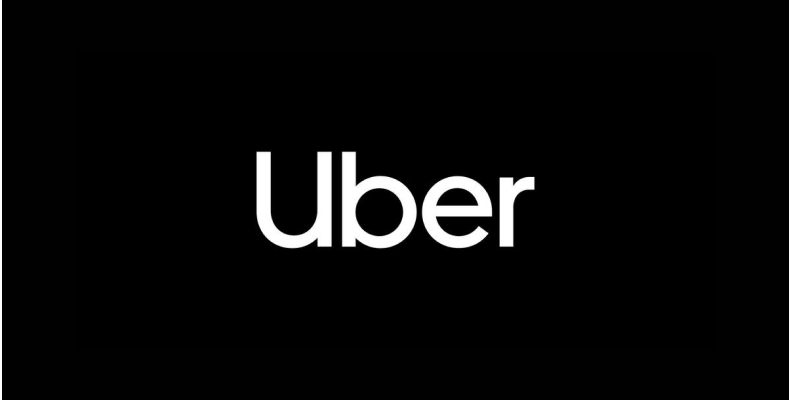We use cookies to ensure we give you the best experience on our website. By clicking Agree you accept our Privacy and Cookies Policy.
Decentralization and artificial intelligence: top 8 SaaS trends to follow in 2024

Iryna Hnatiuk
Author

March 3, 2024
Date

 8 minutes read
8 minutes read
Content
The software-as-a-service model has shaken the business landscape over the past decade. SaaS empowered businesses to be more flexible, productive, and cost-efficient by delivering digital solutions in exchange for a subscription fee. Moreover, it’s worth saying that it would be impossible to acquire all the benefits offered by SaaS with a traditional software delivery approach.
Last year was a breakthrough for SaaS in many ways. The impact of COVID-19 and consumer shifts driven companies to seek more affordable and agile solutions. Consumers, in their turn, adopted further digitalization of each part of their lives. The post-pandemic world is expected to continue moving in the same direction. With a new year on the horizon, let’s explore 8 essential SaaS trends that will stand out in 2024.
Breaking down the key SaaS trends in 2024
Before diving into the SaaS trends, let’s overview the current state of the global SaaS market. Here are some insightful stats:
- Global spending on public cloud services is expected to grow 18.4% in 2021 to total $304.9 billion (Gartner).
- SaaS remains the largest segment of the cloud computing market and will be worth $138 billion by 2022 (Gartner).
- The overall spending on SaaS products per company doubled since 2018, and the number of apps used per organization is up 30% each year (Blissfully).
- On average, each small business operates using 102 different SaaS products, while mid-market businesses employ 137 apps. Large enterprises utilize 288 unique SaaS products across their departments (Blissfully).
Now it’s time to break down the leading SaaS trends in 2024. From SaaS decentralization to further adoption of low-code solutions, these SaaS trends will shape the industry in 2024 and beyond.
SaaS decentralization
While centralized cloud solutions still work for some organizations, the shift to cloud computing eventually puts an end to all-in-one data warehouses. A war over data ownership between the tech giants and rigid privacy regulations force companies to store their data in private clouds. On top of that, many retailers avoid using AWS due to their competition with almighty Amazon.
As a SaaS vendor, you may need to split customer data and run software in multiple clouds. If a client decides to share data with another SaaS provider, both SaaS companies must figure out ways to move or replicate data from region to region.
Another issue is the decentralization of SaaS across departments. People no longer use a single technology for the whole organization – they adopt selected products that match their specific needs. Employees and departments find what works best and use it to enhance their productivity and performance. According to HubSpot, one of the biggest SaaS vendors in marketing and sales, the number of billed users per company almost doubled: from 12 in 2019 to 21 in 2020.

Remote collaboration
Even before the COVID-19 pandemic, remote collaboration was on the rise. Over the last two years, it has skyrocketed across industries and regions worldwide. And it looks like work from home is not going anywhere after the global pandemic. The survey by Gartner found that 82% of CEOs will allow employees to work at least part of the time remotely, and 47% will allow employees to work from home full-time after the pandemic.
And that’s the reason why video conferencing tools are experiencing surge in user numbers. According to Statista, more than 36% of employees in the United States used Zoom when working remotely, followed by Microsoft Teams with 19%. Of course, remote collaboration goes way beyond video conferencing. Messaging apps, project management tools, and file sharing solutions are just a few examples of SaaS software that will continue to grow in the following years.
AI & ML
Alongside machine learning (ML), SaaS solutions use artificial intelligence (AI) to deliver personalized services, automate internal processes, and improve security. In addition, AI and ML algorithms enhance responsiveness and interaction between business, customers, and SaaS technology within various business scenarios.
When applied in marketing and sales, these algorithms successfully predict what customers want before contact is made. And there is a straightforward evidence that customers ask for this level of personalization. According to Salesforce, 75% of B2B customers expect SaaS companies to predict their needs before making the first contact. But the benefits of adopting AI and machine learning don’t end here. It can be used in any industry, from heavy machinery and manufacturing to healthcare and entertainment.
At Blackthorn Vision, we leveraged the potential of cutting-edge technologies for out-of-the-box health assistance. Health Buddy employs AI and ML to create a personalized health routine. It monitors sleep patterns for optimal wake-up time, plans a diet and exercise routine, makes a preliminary diagnosis, alerts about health risks, and recommends consulting a doctor if needed.
Analytics
Data analytics plays a crucial part in many SaaS applications, helping businesses to streamline their activity and accumulate impactful insights on their consumers. Gartner forecasts a 23.3% increase in end-user spending on analytics-centric SaaS by 2024 and mentions business intelligence as one of the most promising categories of SaaS alongside supply chain management, project management, and enterprise resource planning. If you want to read more about different types of SaaS, check out our recent blog post.
As digitalization disrupts industries and individual lives, the amount of data accumulated from various devices grows with the speed of light. Big data is a valuable source of business insights, but it requires specific tools to analyze it quickly and efficiently. The future is in SaaS solutions that offer centralized analytics on diverse data flows and provide business intelligence across multiple touchpoints.
Blackthorn Vision harnessed big data to create real-time charts across platforms and devices. As a result, SciChart is the world’s fastest WPF charts and 2D/3D mobile charts solution used in trading, finance, healthcare, and science. It displays big data and live charts with millions of data points.
API integration
The application programming interfaces (APIs) have been here for a while and have been integrated within countless areas of software development. Developers are looking for a hassle-free way to integrate third-party services into their software, and API is the perfect tool for achieving that. Companies like Uber, PayPal, Airbnb, and others use APIs to scale up their products.
While SaaS pioneered the idea of moving from in-house development to a pay-as-you-go model, APIs amplify it even further. Shortly, APIs will develop their own ecosystem and become a separate category of SaaS.

Micro-SaaS
Micro-SaaS, or vertical SaaS, is the type of SaaS product aimed at a specific business niche. The rapid SaaS market growth has resulted in cutthroat competition for a place under the sun. For that reason, SaaS companies must find new, more innovative ways to offer value and reconnect with their customers. Emerging micro-SaaS vendors are adapting to the environment by offering complementary services to existing SaaS platforms.
Micro-SaaS are typically run by small teams and focused on improving a popular SaaS product by adding a missing feature. Like remora on a whale, micro-SaaS attach to bigger players and perks them as well as their customers. Despite the tiny size, micro-SaaS gain big scores: US-based SaaS provider DealerTrack, for example, was purchased for over $4 billion.
Mobile optimization
On average, users spend about 5 hours per day on their smartphones. According to Statista, 54% of all internet traffic comes from mobile phones. So, it should come as no surprise that your SaaS product needs to be mobile-responsive.
Accessible design, app personalization, task optimization, one-swipe actions, and intuitive filters are not nice-to-have features; they are vital for every SaaS application in 2024 and forth. What’s more, SaaS software should run smoothly across desktop, mobile, and tablet devices, offering a seamless user experience. For more info, check out our guide on mobile app development.
Low-code & no-code
Software development teams are overloaded with the SaaS development pipeline full of changing requirements, bug fixes, and new features. To keep up with the market and competitors’ pace, they need to evolve their SaaS products constantly. No-code and low-code tools help businesses to bring their SaaS products to life without the need for technical experience. In this way, businesses get more autonomy and can easily add new features, saving time and costs on hiring programmers.
The global low-code market is predicted to generate $187 billion of revenue by 2030. So, now it’s a good time to launch your low-code platform. The examples of low-code platforms include a variety of enterprise software united by one main feature: a simple drag-and-drop interface builder that allows customizing your landing page or app. SaaS industry leaders such as Magento, WordPress, Zendesk, and Salesforce all provide low-code tools for their customers.
Staying ahead of SaaS industry trends, Blackthorn Vision created the Event Registration Platform with no-code features. Users can customize everything about the event, from registration forms and drop-down menus to the look and feel of a landing page. A simple and efficient user experience makes customizing easy and doesn’t require any coding skills.

Building enhanced SaaS solutions in 2024
The key takeaway from our list of SaaS trends is that the SaaS market is still developing. SaaS companies need to respond swiftly to meet new customer demands. With an increasing number of remote workers that carry their business means on the go, taking the mobile-first approach will be essential for ongoing success.
Even though it’s hard to predict all upcoming trends, one thing is certain. SaaS will continue to innovate, and businesses have to keep up with it to stay afloat. Blackthorn Vision has 12 years of experience in custom SaaS software development and dozens of thriving projects. So, if you feel that it’s time to level up, reach out to us.



















































































